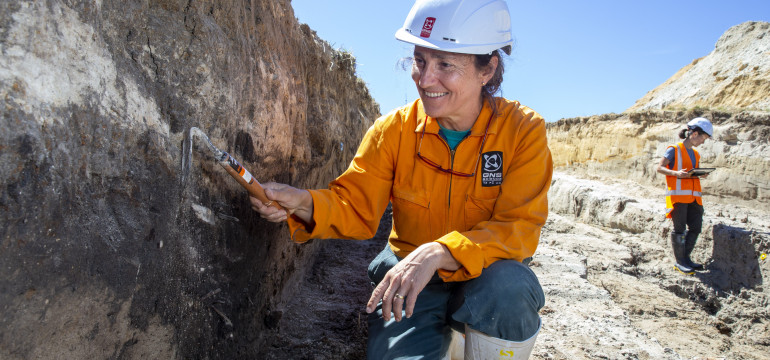EQC awards $1m to researchers to boost New Zealand’s resilience to natural hazards
The Earthquake Commission (EQC) has awarded 13 researchers a total of $1m as part of its Biennial Grants to help New Zealanders better understand our natural hazard risks and identify ways to reduce the impact of those hazards.
EQC wants natural hazard resilience to become embedded in all aspects of decision-making for homes, towns, and cities. One vital part of achieving this vision is to invest in research that will reduce our vulnerability to natural hazard events. Biennial Grants are awarded every two years.
Successful applications for this year’s grants were those that aligned with EQC’s research priorities, but also weaved in either a mātauranga Māori, climate change or social science lens over their research.
The programme has been running since 1989 and this year around 120 researchers applied, which was a record number.
EQC’s Research Manager Dr Natalie Balfour says each of the 13 projects will help understand New Zealand’s natural hazard risk and reduce the impact on people and property when events do happen.
“The successful projects cover everything from building lower carbon cost homes that are seismically resilient, to deploying ocean bottom seismometers to study Wellington offshore earthquakes in the ‘locked’ region of the Hikurangi Subduction Zone, and design for the re-erection of an important wharenui using mātauranga Māori.
“When sound data and research is put into the hands of key decision-makers like policy makers, local councils, designers, engineers, builders and most importantly, the New Zealand public, this is when we can start making a difference. Investing in science and research and translating that into tangible outcomes is a critical part of that,” Dr Balfour says.
She said results from previous EQC investment had led to new building techniques and guidance for engineers, identifying at-risk land, and detailed information for planners and emergency managers about the likely effects of natural hazards across the country.
“When homeowners are paying their EQC levy, as well as getting natural disaster insurance, they are making a contribution to research that helps us better understand the likelihood and impact of natural hazards, and what steps can be taken to reduce the impact on New Zealanders,” Dr Balfour says.
EQC this year introduced two special allocations for the grants to ensure there are opportunities for Māori and early-career researchers.
“EQC is thrilled by the response to this year’s grant round. We are pleased to be supporting fantastic projects that broaden the focus of EQC’s research programme and will deliver new knowledge for New Zealand’s resilience.”
Along with funding the Biennial Grants, EQC also contributes $14 million to the GeoNet natural hazard monitoring system, invests in research at universities across New Zealand and supports regional organisations that bring together natural hazard research with local government decision-makers and emergency managers.
Media contact:
Dan Whitfield
027 202 8494| media@eqc.govt.nz
About EQC’s Biennial Grants:
- Biennial Grants have been running since 1989 and have provided around $10 million in funding for more than 250 projects over the years.
- Every two years, EQC invites experienced and emerging researchers to submit proposals for Biennial Grant public good research (available for public use) as defined by the Earthquake Commission Act 1993(external link) and EQC’s Research Investment Priorities Statement(external link).
- Projects fall into five categories:
- How people perceive and manage risk (empowering people)
- Building and infrastructure performance (resilient buildings)
- Land-use management (smarter land-use)
- The governance and economics of disaster risk and disaster risk management
- Quantifying the size and frequency/likelihood of hazards and their impacts.
- Successful candidates were those that not only showed their work aligns with EQC’s focus areas but also successfully weaved a mātauranga Māori, climate change and/or social science lens over their research.
EQC Biennial Grant Recipients 2022
|
Project |
Lead researcher |
Organisation |
|
Improving school-based hazards education outreach programmes: towards enhancing alignment with schools and communities |
Dr Marion Tan
|
Massey University |
|
Long-term communication of volcanic risk for effective decision-making |
Dr Julia Becker
|
Massey University |
|
Changing societal expectations and risk appetite: exploring influences on building earthquake resilience in lower seismic hazard zones |
Dr Lauren Vinnell
|
Massey University |
|
Dynamic community engagement on disaster risk reduction |
Dr Charlotte Brown
|
Resilient Organisations |
|
MĪMIRŪ: The application of an endangered indigenous construction practice onto a prototype timber portal frame to assess seismic resilience and impact for use on future wharenui |
Prof Anthony Hoete
|
University of Auckland |
|
Embodied Carbon: A driver for change towards seismically resilient high density housing |
Dr Charlotte Toma
|
University of Auckland |
|
Risk-targeted design for functionality |
Dr Anne Hulsey
|
University of Auckland |
|
More resilient wall building structures |
Prof Santiago Pujol
|
University of Canterbury |
|
Low-cycle fatigue, strain-aging, and residual-capacity testing of reinforcing steels to guide repair strategies and support functional recovery. |
Prof Geoffrey Rodgers
|
University of Canterbury |
|
Papa Wiri: Te Ao Māori disaster risk reduction through participatory co-design of educational tools |
Ms Kristie-Lee Thomas and Brandy Alger
|
University of Canterbury |
|
Climate risk and the insurance sector: The law, policy, and economics of climate-related |
Prof Ilan Noy
|
Victoria University of Wellington |
|
Seismic hazards from earthquakes in the locked zone offshore Wellington |
Prof Martha Savage
|
Victoria University of Wellington |
|
Sensing unrest in New Zealand’s largest city: detailed mapping of seismicity in Auckland |
Dr Calum Chamberlain
|
Victoria University of Wellington |
